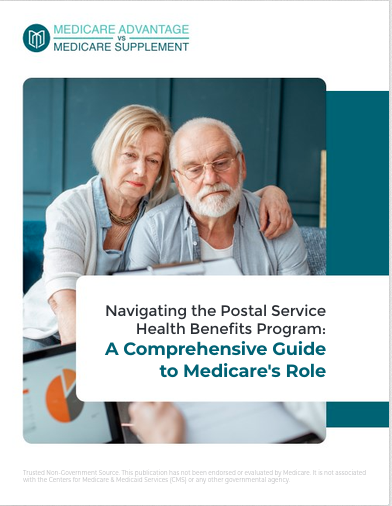Key Takeaways
- The 2024 Medicare reforms have significantly reduced out-of-pocket drug costs, providing relief to beneficiaries.
- These changes aim to make prescription drugs more affordable, especially for those with chronic conditions requiring expensive medications.
New Medicare Rules for 2024 Will Slash Drug Costs: Here’s How It Works
The year 2024 has ushered in transformative changes to Medicare, with significant reductions in prescription drug costs for beneficiaries. For years, the rising costs of medications have been a pressing issue, particularly for seniors and those with chronic illnesses. This year, Medicare reforms are addressing these challenges head-on, offering long-awaited relief. The new regulations simplify the process, ensure affordability, and protect enrollees from devastating out-of-pocket expenses. Let’s break down how these changes will benefit Medicare recipients and how they can take advantage of the new system.
Capping Out-of-Pocket Prescription Costs
One of the most pivotal changes in 2024 is the new cap on out-of-pocket costs for Medicare Part D beneficiaries. Previously, enrollees faced a complex and often overwhelming structure of payments. After surpassing a certain spending threshold, beneficiaries entered the “catastrophic coverage” phase, where they were still responsible for a percentage of drug costs, with no upper limit. This created substantial financial hardship for those relying on expensive, ongoing treatments.
Now, under the new rules, Medicare has introduced a cap on these out-of-pocket costs. This means once beneficiaries reach a set limit in their spending, they will no longer have to pay anything for covered prescription drugs for the rest of the year. This reform provides a crucial safety net, especially for those managing long-term illnesses like cancer, diabetes, or heart disease, where medication expenses can quickly add up.
This cap allows Medicare recipients to better manage their healthcare expenses and removes the unpredictability that used to accompany high-cost prescriptions.
How This Affects Chronic Disease Management
The 2024 cap on out-of-pocket drug expenses is particularly significant for individuals with chronic conditions. Those suffering from illnesses such as rheumatoid arthritis, multiple sclerosis, or diabetes often need life-saving but expensive medications. In past years, these patients often had to make difficult choices between affording their prescriptions and covering other essential living expenses.
With the cap in place, patients can now access the medications they need without fear of financial ruin. This shift is expected to improve medication adherence, as patients will no longer be forced to skip doses or delay treatments due to cost concerns. Ultimately, this change not only reduces the financial burden but also promotes better health outcomes by encouraging consistent use of prescribed therapies.
Negotiation of Drug Prices
Another important development in 2024 is Medicare’s ability to negotiate drug prices directly with pharmaceutical companies. Historically, Medicare was prohibited from negotiating prices, which allowed drug manufacturers to set their own rates. This often led to inflated costs for essential medications, as there was little incentive for companies to lower prices.
As of this year, however, that has changed. The new rules grant Medicare the authority to negotiate prices for certain high-cost medications, particularly those used by a large number of beneficiaries. This policy is already starting to drive down prices for some of the most widely used and expensive drugs on the market.
The First Wave of Negotiated Drugs
The list of the first 10 medications subject to price negotiation under the new rules includes treatments for conditions like diabetes, cancer, and autoimmune disorders. These drugs are widely prescribed but have historically been associated with high costs, placing a significant strain on both individuals and the Medicare system.
By negotiating lower prices, Medicare aims to reduce the overall cost burden on beneficiaries while also reducing the financial load on the program itself. Lower drug prices will directly benefit patients, making life-saving medications more affordable and accessible.
$2,000 Annual Out-of-Pocket Cap
Another critical change introduced in 2024 is the establishment of a $2,000 annual cap on out-of-pocket expenses for Medicare Part D. Previously, there was no limit on how much beneficiaries could spend on prescription medications each year, leading to overwhelming costs for individuals taking high-priced drugs.
Now, with the introduction of the $2,000 cap, once a beneficiary’s out-of-pocket spending reaches this amount, Medicare will cover 100% of their prescription drug costs for the rest of the year. This protection is a game-changer for enrollees who rely on multiple medications or have high monthly prescription costs. No longer will they face a constant stream of co-pays, deductibles, and other expenses once they’ve hit this limit.
This annual cap is a significant financial safeguard, providing peace of mind for beneficiaries and allowing them to focus on their health without worrying about the financial implications of their prescriptions.
How This Helps Low-Income Beneficiaries
The new $2,000 cap is particularly helpful for lower-income Medicare beneficiaries who may have struggled to afford their medications in the past. Many seniors live on fixed incomes, and even small increases in drug costs can severely affect their financial stability. The new limit ensures that no matter how costly their prescriptions may be, they won’t have to pay more than $2,000 out-of-pocket in a given year.
For individuals with limited means, this reform represents a significant improvement in their ability to manage healthcare expenses, reducing the risk of going without necessary treatments due to financial constraints.
Expanded Subsidies for Low-Income Beneficiaries
In 2024, Medicare has expanded its subsidy program for low-income beneficiaries, making it easier for more people to qualify for financial assistance with their prescription drug costs. Known as the Low-Income Subsidy (LIS) program or “Extra Help,” this initiative assists eligible beneficiaries by lowering their out-of-pocket expenses for premiums, deductibles, and co-pays.
How the Changes Work
Previously, eligibility for these subsidies was limited to individuals with incomes at or below 150% of the federal poverty level. However, the 2024 reforms have increased the income threshold, allowing more beneficiaries to qualify for help. Additionally, the application process has been simplified to ensure that those who need assistance can access it without unnecessary hurdles.
For those who qualify, the subsidies can substantially reduce or even eliminate out-of-pocket drug costs. This can make an enormous difference, particularly for seniors and disabled individuals who might otherwise struggle to afford their medications. By expanding the program, Medicare is helping ensure that cost is no longer a barrier to accessing life-saving prescriptions.
Easier Access to Life-Saving Medications
In addition to reducing the overall financial burden, the 2024 Medicare changes also aim to streamline access to critical treatments. Beneficiaries will find that the process of obtaining prescriptions is now more straightforward, with fewer bureaucratic obstacles and more consistent pricing across the board.
For example, the reforms have also led to changes in how pharmacies bill patients for drugs, making costs more transparent and reducing unexpected charges at the point of sale. The greater predictability in pricing allows beneficiaries to budget more effectively for their healthcare needs throughout the year.
What This Means for Future Drug Costs
The reforms implemented in 2024 mark a significant step forward in reducing the financial burden of prescription drugs for Medicare beneficiaries. By capping out-of-pocket expenses, expanding low-income subsidies, and allowing Medicare to negotiate drug prices, the system is becoming more affordable and accessible.
While these changes will undoubtedly bring relief to millions of Americans, there’s still work to be done to ensure long-term affordability and sustainability in the Medicare program. Future reforms may continue to build on these foundations, with the aim of providing even more cost savings and better access to critical medications for all Medicare enrollees.
More Affordable Medications for Medicare Beneficiaries
The 2024 Medicare reforms are a substantial step toward making prescription drugs more affordable and accessible for those who need them most. By capping out-of-pocket costs, expanding subsidies, and negotiating drug prices, Medicare is delivering long-overdue relief to its beneficiaries. These changes will not only ease the financial burden but also improve access to life-saving medications, ensuring better health outcomes for millions of Americans.
Contact Information:
Email: [email protected]
Phone: 2065551234










